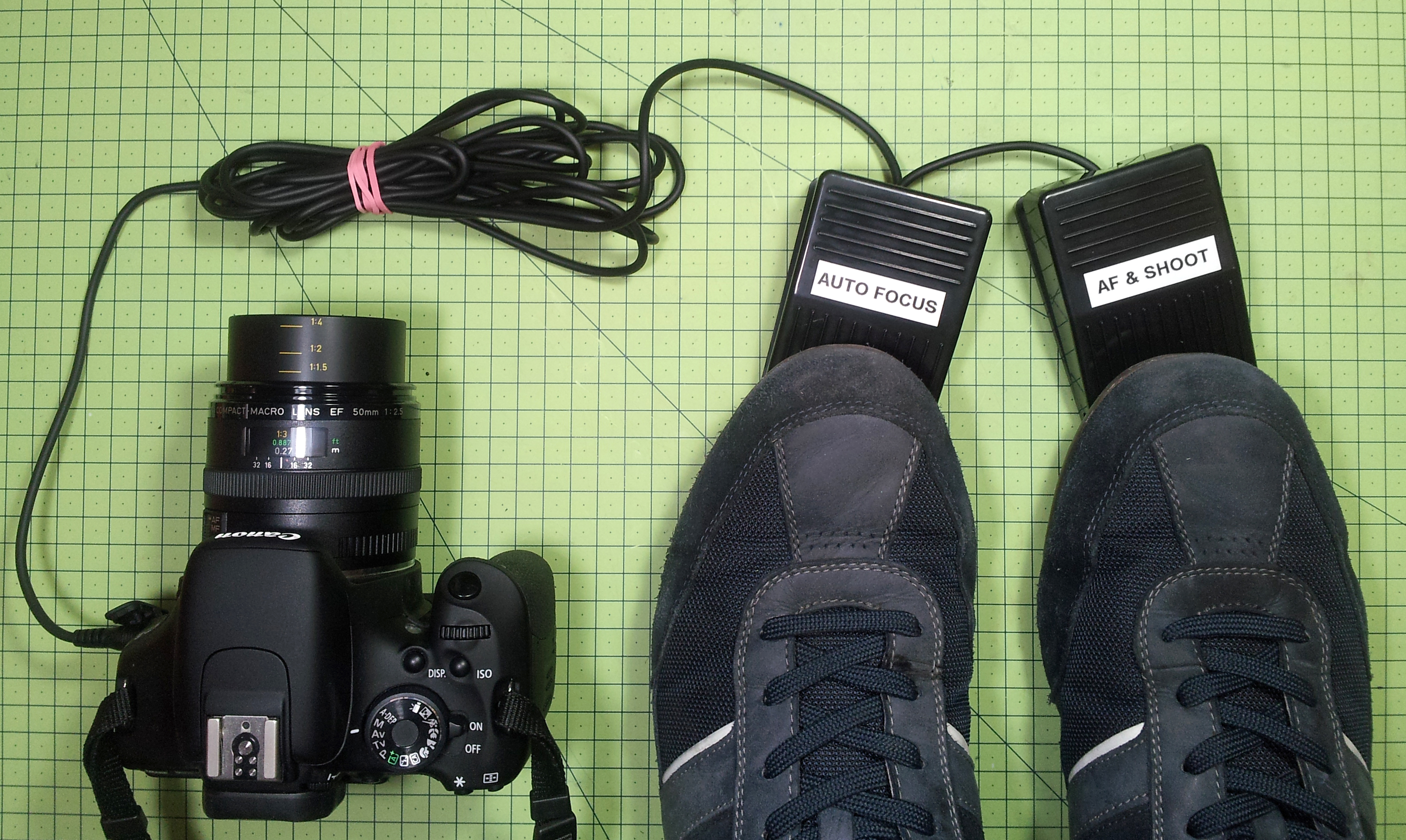I enjoy creating step-by-step guides for my projects, but I’ve realized that in order to take pictures of hands-on work I need a hands-free way to operate the auto-focus/shutter on my DSLR Camera (Canon 600D).

I first tried using a hand-held remote – and pressing the button with my toes, and even trying to bite-to-shoot with my mouth! So as you might expect, necessity drove me to create these DSLR foot pedals.
Having shown this project to a few friends who take more professional photographs than myself, I realized that even if you are not photographing both your hands, using foot pedals just seems easier, as they are sturdy, reliable, and allow you to focus on the task at hand, rather than fumbling around for the remote.
Having taken apart my hand-held remote (and a few others since), they are often relatively simple switches, making them easy to adapt to other triggering mechanisms. You might start looking to use relays to create more elaborate/sensor-triggered projects after reading this!



